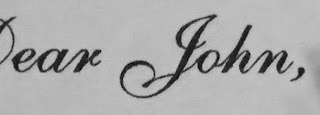As noted on my LinkedIn post, I recently attended a conference sponsored by an organization of which I am a long-time member. Within a few days of the event, I received three emails from other attendees saying how nice it was to meet me there, along with a sales pitch about how they might able to help me or my clients with their products/services.
This would have been acceptable had I actually met them; I do not even know who they are (and I know a lot of other organization members)!
This really pissed me off and gave me three reasons to scratch my head over these people's email marketing process (and etiquette).
Warning: Before you send out a followup email or marketing message to some list you downloaded or pulled together on your own, be very careful what you say, and be very mindful of who you are saying it to!
The form letters landed like lead balloons in my inbox, rather than as effective lead generation tools. These were not auto-generated responses to a request for more information (which would have been welcomed as timely followups). These were three emails by three people who are now a lesson about what not to do in marketing (digital or otherwise). Here are some ways those ill-conceived emails could have been better conceived and executed:
Create different lists for your message. Make one for fellow attendees you don't know and another for those who you actually did meet. Email marketing solution such as MailChimp, Constant Contact, aWeber, emma, etc. make this easy to do and will show recipients that you approached your marketing effort with a grain of consciousness (since it will lead to tip #2).
Form letters can have different forms. Form letters are expedient, but the openings and closings should be modified for your different target recipients. The boilerplate openings of all three emails reflected a lack of thought about who the email was going to--an immediate turn off. If you are sending marketing communication that starts with "It was nice to meet you at ..." make sure you actually met the recipient. It is easy enough to revise the opening and closing copy for a list of fellow attendees who you did not meet but would like to.
Suggest instead of selling. I did not know the senders and had no need for or interest in whatever they were selling. However, had they used the email to provide some value to me, I might have given them a chance. There are ways to promote your products or services without being overtly promotional (the foundation of content marketing). For example, you can mention what you do and then direct the reader to a great resource, or provide a helpful tip. Had I seen any of that in the bodies of the emails, my annoyance at the bad copy choice up front might have been mitigated and given me a reason to pause before hitting "delete." At the very least, I'd have been more likely to remember the senders as professionals who want to help rather than sell.
Good email marketing practices.
The one thing that was right about these three emails was that the senders clearly stated the connection (the conference) so at least it was not obvious spam. If you get a list as part of a sponsorship or pull together your own, make sure to identify right at the top why the person is getting your email. Oh ... and just because I handed you a business card at a networking event does not mean I just subscribed to your e-newsletter! Please ask people in advance if they'd like to be added to your list.If you need help crafting an email marketing message that provoke unnecessary rants among your recipients, ask me (caryn@starrgates.com) or a marketing communications professional that you work with. We'll keep you on those recipients' good sides!

